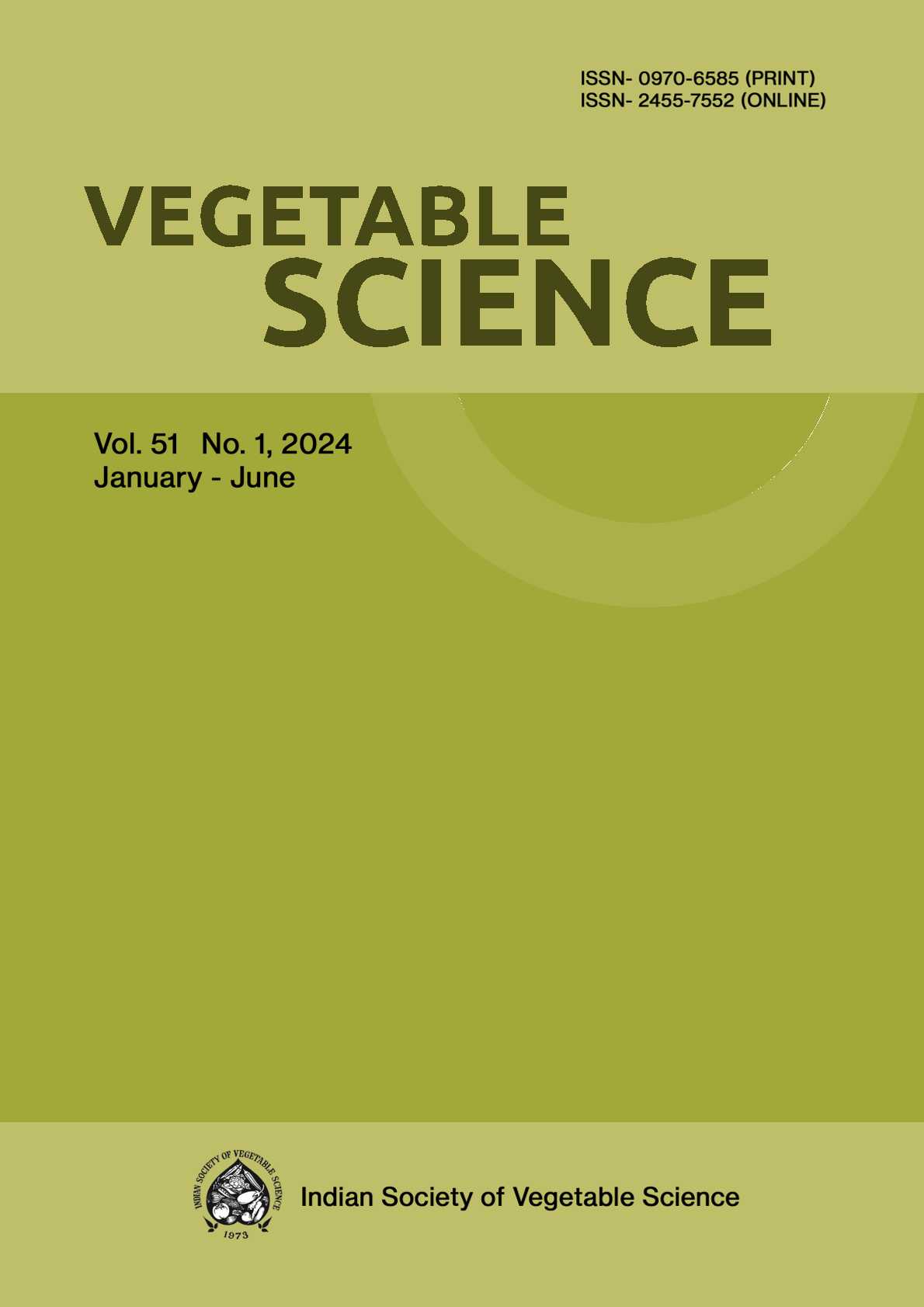Origin, distribution, taxonomy, genetic diversity and genetic improvement of ash gourd {Benincasa hispida (Thunb.) Cogn.}
DOI:
https://doi.org/10.61180/vegsci.2022.v49.i1.01Keywords:
Ash gourd, Origin, Germplasm, Genetic improvement, Genetic diversity, VarietiesAbstract
Ash gourd or wax gourd (Benincasa hispida), a member of
the Cucurbitaceae family, is cultivated throughout tropical
and subtropical regions of the world. Fruits may be
consumed immature (usually cooked or pickled) or mature
(used in soups), and can also be used in confectionary.
Apart from its nutritional value, wax gourd has also long
been valued in Ayurvedic medicine. Current breeding efforts
in wax gourd are focused on assessing available genetic
diversity and the potential for heterosis. Research advances,
including origin and geographic distribution, taxonomy,
botanical description, genetic diversity, genetic resources,
genetic improvement (cultivar groups, uses, breeding, and
cultivars/varieties/hybrids), nutritional value of fruit, health
benefits of fruit, ash gourd juice, ethnic/cultural significance
regarding ash gourd are reviewed in this article. This review
article provides a reference for basic and applied research
on ash gourd, an important Cucurbitaceous vegetable crop
Downloads
Published
Issue
Section
License

This work is licensed under a Creative Commons Attribution-NonCommercial-NoDerivatives 4.0 International License.






